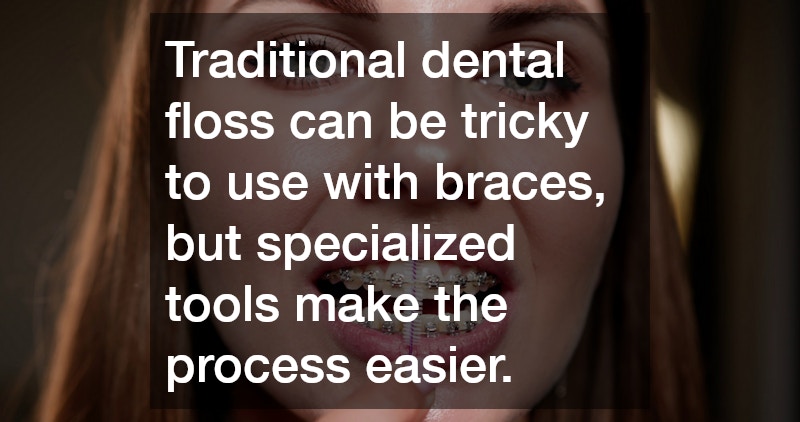The Importance of Flossing During Orthodontic Treatment
Orthodontics is a significant investment in your oral health and overall appearance. While maintaining proper oral hygiene is always important, it becomes even more crucial and challenging when you have braces or other orthodontic appliances. Flossing plays a vital role in maintaining oral health during this period. In this article, we discuss the importance of flossing and address common questions people have regarding this topic during orthodontics treatments.
Why Is Flossing Important with Braces?
Prevention of Plaque and Tartar Build-up
Braces create additional surfaces where food particles and plaque can accumulate. Without daily flossing, this buildup can harden into tartar, which is difficult to remove without professional cleaning.
Consistent flossing helps prevent discoloration, bad breath, and the risk of cavities forming between teeth and around brackets.
Avoiding Gum Disease and Inflammation
Plaque buildup can irritate the gums and lead to gingivitis, an early form of gum disease. Swollen, bleeding gums are common when flossing is neglected during orthodontic treatment. Maintaining a regular flossing routine keeps gums healthy, reduces inflammation, and supports overall oral health throughout the orthodontic process.
Ensuring Effective Orthodontic Treatment
Clean teeth and healthy gums are essential for your orthodontic treatment to progress as planned. When plaque and debris remain between teeth, they can hinder proper movement and slow down results. By keeping the areas around brackets and wires clean, flossing supports the efficiency and success of your orthodontic treatment.
How to Floss Effectively with Orthodontic Appliances
Choosing the Right Flossing Tools
Traditional dental floss can be tricky to use with braces, but specialized tools make the process easier. Floss threaders allow you to guide floss beneath the wires, while orthodontic flossers are designed with stiff ends for simple navigation. Water flossers are another effective option, using a stream of water to remove food particles and plaque from between teeth and around brackets.
Step-by-Step Guide to Floss with Braces
Start by cutting a piece of floss about 18 inches long and threading it under the main wire using a floss threader. Gently slide the floss between your teeth, curving it around each tooth in a “C” shape. Move the floss up and down along the sides of each tooth to remove plaque and debris. Repeat this process for each tooth, taking your time to avoid damaging your wires or brackets. For water flosser users, aim the nozzle at a 90-degree angle toward the gumline and move along each tooth to clean around the brackets and wires.
Overcoming Common Flossing Challenges
Flossing with braces can feel time-consuming at first, but it becomes easier with practice. Many orthodontic patients find it helpful to establish a nightly routine and use a mirror to ensure they are reaching every area. If your gums feel sore, continue flossing gently, as discomfort often decreases as gums become healthier. Using waxed floss can also make the process smoother and prevent snagging on brackets.
What Are the Consequences of Not Flossing During Orthodontic Treatment?
Development of Cavities and Tooth Decay
Neglecting flossing allows plaque and bacteria to thrive in hard-to-reach areas. Over time, this can lead to cavities between the teeth or around orthodontic brackets. Once decay develops, it may require additional dental treatment and can interfere with your orthodontic progress.
Prolonged Orthodontic Treatment Timeline
Poor oral hygiene can slow down tooth movement, causing treatment to take longer than expected. In some cases, gum inflammation or decay may require treatment pauses until oral health improves. Maintaining a proper flossing routine ensures your orthodontic treatment stays on schedule and produces the best possible results.
Potential for More Frequent Orthodontic Adjustments
When plaque buildup causes gum swelling or changes in tooth positioning, orthodontists may need to make more frequent or complex adjustments. Regular flossing helps minimize these complications, allowing your treatment to proceed smoothly with fewer interruptions.
Flossing during orthodontic treatment is not just about maintaining oral hygiene but also about ensuring the success and efficiency of the treatment itself. By understanding the necessity of flossing, adopting effective techniques, and being aware of the consequences of neglecting this practice, patients can enjoy better oral health outcomes and a smoother orthodontic experience. Commit to integrating flossing into your daily routine and reap the benefits of a healthier smile.

